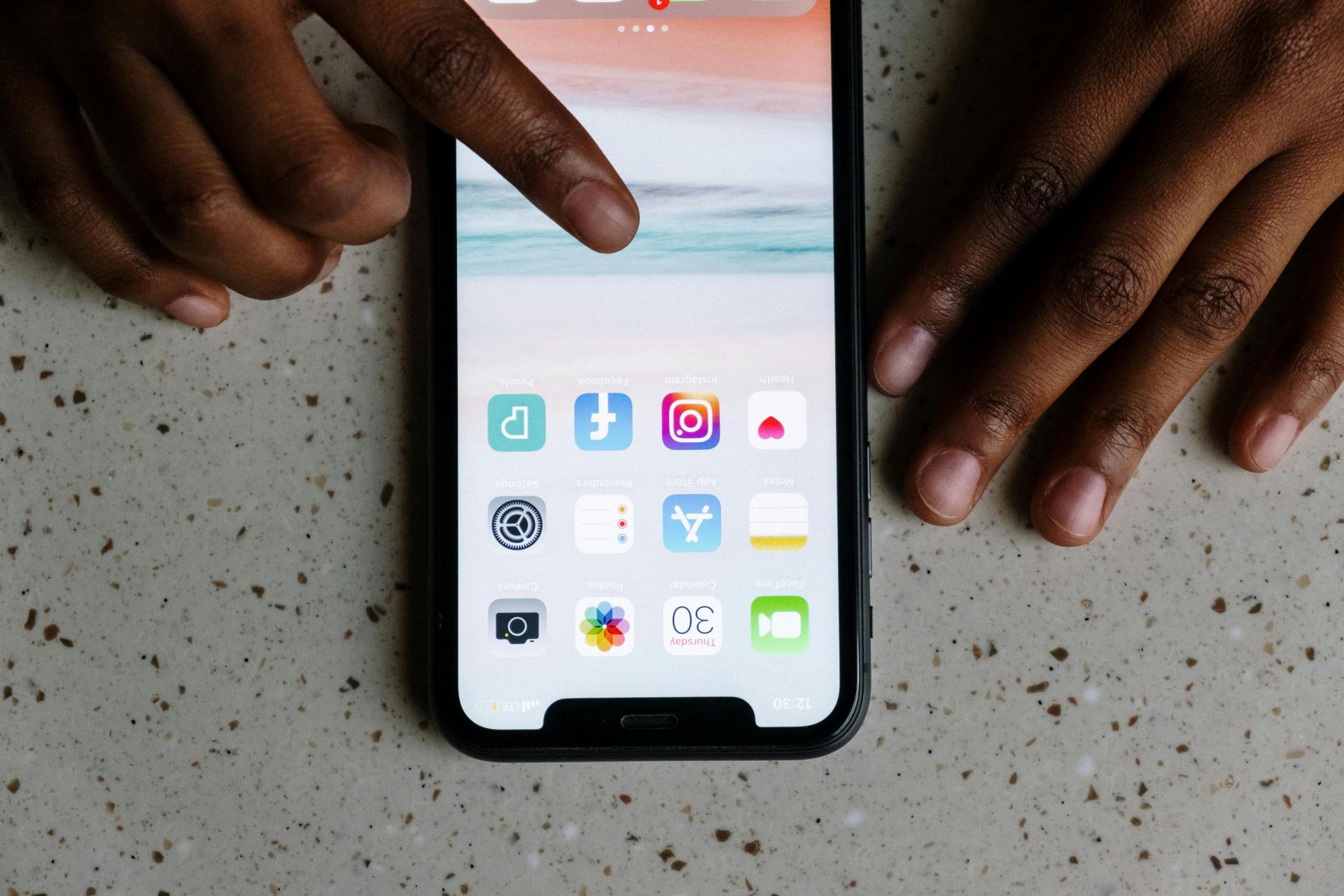The Future of App Development in 2025: Key Strategies for Winning in a New Era
Are you ready to look into the future? The world of app development in 2025 isn’t just an evolution—it’s a complete transformation. Building an app won’t be enough. To thrive, developers will need to create highly personalized, lightning-fast, and frictionless experiences. The rules have changed. It’s time to adapt.
The New Competitive Landscape
2025 will be a game-changer. Millions of apps will be vying for user attention, and standing out will be tougher than ever. The days of releasing a “good” app and expecting users to flock to it are over. The expectations for personalization, seamless integration, and performance are ever-increasing.
Why Personalization Will Dominate
In 2025, personalization will define the leaders in app development. AI and machine learning (ML) technologies are powering better, easier, faster personalization that is more accessible to everyone. Tech giants no longer have a leg up when it comes to AI-powered personalization—it’s becoming a standard for businesses of any size, in any industry.
We’re talking about apps that go beyond basic user-centric design and are optimized for a specific operating system. Picture this: a fitness app that adjusts your workout in real-time based on your progress, or a language learning app that creates a unique learning path tailored precisely to your pace and preferences. This level of personalization is the future. It’s not just a buzzword—it’s the difference between success and irrelevance.
The key to unlocking this next level of user engagement lies in understanding what truly resonates with users: the feeling of being understood. Developers must leverage AI-driven insights to deliver experiences that feel custom-built for every individual. It’s about creating apps that don’t just fit into a user’s life but seamlessly integrate and elevate it.
The Power and Pressure of 5G
The arrival of 5G is a seismic shift in mobile app development. Blazing speeds mean users will demand instant gratification. Lag? A relic of the past. In 2025, milliseconds will make the difference between a satisfied user and a frustrated one.
Developers must prioritize efficiency like never before. Frameworks like Kotlin Multiplatform (KMP) and Flutter, which simplify cross-platform development for iOS and Android, will continue to grow in popularity due to faster development and reduced maintenance. Leaner code, efficient development, and rapid load times will be non-negotiable.

Speed and Experience Without Sacrificing Uniqueness
The challenge of balancing speed with unique identity in Apple products, including the iPhone and Apple Watch, will push developers to rethink how they build new game features. Performance improvements are essential, but AI provides a solution that ensures apps don’t lose their individuality. Through intelligent data analysis and adaptive algorithms, apps will evolve based on user behavior, offering tailored experiences without becoming generic.
AI-Powered Apps: Crafting Unique Experiences
AI isn’t the future—it’s already reshaping the present, and by 2025, its role in app development will be dominant. Google’s NotebookLM now offers Audio Overview: the ability to generate personalized podcasts that sound remarkably human based on the content you provide. This kind of innovation will rule the market in 2025, and hyper-personalized experiences will set the best apps apart.
Collaborative Filtering: Personalization on Steroids
One of the key ways AI will fuel this transformation is through collaborative filtering. By analyzing user patterns, apps will predict user preferences, offering suggestions they didn’t even know they wanted. It’s an AI-powered matchmaking service—pairing users with content, products, and services that align with their tastes, effortlessly.
But it’s not just about content; AI will personalize how users engage. Whether they prefer learning visually, through sound, or by doing, AI powers a choose-your-own-adventure experience where content adapts dynamically to optimize engagement and retention. In 2025, apps won’t just serve users—they’ll grow with them.
Navigating Privacy in a Data-Driven World
With the incredible personalization that AI enables, data privacy concerns inevitably arise—especially around how user data is handled. As developers leverage more data to create seamless, tailored experiences, they must strike a delicate balance between personalization and privacy. For most, privacy today is about securing identities and protecting payment information—issues that have existed since the dawn of the internet.
Businesses have a more immediate focus: safeguarding intellectual property. AI systems, like chatbots, can capture and even extract proprietary information. A poorly designed system could unintentionally learn from sensitive data, exposing companies to risks. Meanwhile, competitors could exploit vulnerabilities to extract valuable insights, even through interactions with consumer-facing AI tools.
The apps that will succeed in 2025 will be those that navigate these complexities with transparency, offering users control over their data while building trust in the product. They’ll balance the desire for personalization with the need to protect both user and company interests, recognizing that trust and security are as crucial as innovation.
Ethical Apps: A New Standard for Success
It’s not just about crafting engaging experiences; it’s about crafting ethical ones. In 2025, developers must take a proactive stance on data ethics and privacy, offering users confidence in how their app’s privacy practices and data are managed. Privacy can no longer be an afterthought—it must be a fundamental pillar of app success.
This shift toward ethical development aligns with the values of Gen Z and the next wave of consumers, who prioritize authenticity, ethics, and sustainability in ways previous generations have not. For them, it’s not enough that an app works well; they want to know that it operates with integrity, respects their privacy, and aligns with their values.
Central to this is the concept of “Ethical AI,” where the primary goal is to create responsible AI systems that “do no harm.” This means ensuring that AI doesn’t generate harmful or inappropriate content within the context of its end users. Companies are addressing this challenge by building specialized teams focused on pre-training data sanitization, as well as post-training responsibility testing and implementing guardrails. Given that AI models often learn from vast amounts of internet content—content that may reflect outdated or biased views—these efforts are not one-time fixes. They require ongoing attention and adaptation, especially as cultural norms evolve.
For companies that develop foundation models or deploy consumer-facing chatbots, the commitment to ethical AI must be continuous. It’s not just about meeting regulatory requirements; it’s about building trust and loyalty among users who care deeply about the values behind the technology they use.
App Store Optimization (ASO): The New Imperative
In the competitive landscape of 2025, the role of App Store Optimization (ASO) is evolving. While ASO is traditionally seen as crucial—guiding users to discover new apps through keyword searches—it’s worth questioning how much this really matters today. Many downloads come through word-of-mouth recommendations or social media buzz, rather than from users typing generic keywords like “music” into the App Store.
While some estimates suggest that 60-65% of app downloads are still driven by organic search, this figure doesn’t clarify the split between brand-specific searches and broader keyword exploration. It’s likely that the bulk of these downloads still go to the top-ranking apps.
However, this landscape could shift dramatically with the integration of more advanced search capabilities, like Apple Intelligence. Imagine users asking, “Can you give me an app like Spotify but focused on classical music?” In a world where users rely on more conversational searches, ASO might become essential again—not just for keywords, but for optimizing how apps are positioned in response to nuanced user queries.
For now, developers should focus on optimizing elements like visual components and review management (maintaining a good average review and responding to reviewers). Both remain key features when it comes to ASO. But they should always keep an eye on how search evolves: those ready to adapt to these new search behaviors will be positioned to succeed as the app discovery process transforms.

The Visual Hook: First Impressions Matter
The app icon, screenshots, and preview video are your digital storefront—these elements need to grab users instantly on both Android and iOS platforms. In 2025, visual appeal is a make-or-break factor, and it extends beyond just the App Store and Google Play Store listings. With iOS emphasizing customization, there’s an opportunity to leverage customizable and dynamic app icons—such as offering black-and-white options—alongside widgets and Live Activities where relevant.
These are relatively low-hanging opportunities that can help apps stand out and maintain their presence on users’ devices, creating a sort of “Post-ASO” strategy. Depending on the app’s value proposition, these features can also be highlighted in the App Store assets to attract users.
AI can play a role in personalizing the content displayed through widgets and live screens, making your app a valuable part of the user’s lock screen or home screen. By earning that premium screen real estate, your app can ensure continued engagement and retention.
Monetization Strategies: Choosing the Right Fit
The million-dollar question for app developers is how to monetize effectively. In 2025, subscription models will dominate, offering ongoing value through new content, features, or updates. Users are increasingly comfortable with these models—78% of adults globally now use subscription services, favoring their convenience and flexibility. This shift makes subscriptions an ideal choice for apps that continually evolve to meet user needs.
Subscription Models: Building Lasting Relationships
Subscriptions aren’t just a revenue stream—they’re a relationship-building tool. They allow developers to maintain ongoing engagement with users, providing them with continuous value and forging deeper connections. However, for apps that don’t lend themselves to constant updates—such as games or utilities—in-app purchases will remain a viable option. The key will be matching your monetization strategy to the type of experience your app delivers.
The Blueprint for Success in 2025
As we move toward 2025, the app development landscape will be defined by one more principle: adaptability. Developers who succeed will be those who prioritize the user, harness the power of AI, optimize for discoverability, and select the right monetization model. But beyond the technology and tactics, the real key is staying curious, constantly learning, and keeping users at the heart of every decision.
What are the top considerations when submitting an app to the App Store?
Developers should focus on app store optimization (ASO), ensuring app titles, descriptions, and keywords are optimized. They should also prioritize app quality, functionality, and user experience. Visual assets like app icons and screenshots play a crucial role in attracting users.
App development in 2025 is an art and a science. It’s about merging cutting-edge technology with creative problem-solving to build apps that resonate with users on a personal level. The future is fast approaching, and those who innovate, optimize, and adapt will not only survive—they’ll lead.
Written by Nathan Jones.
